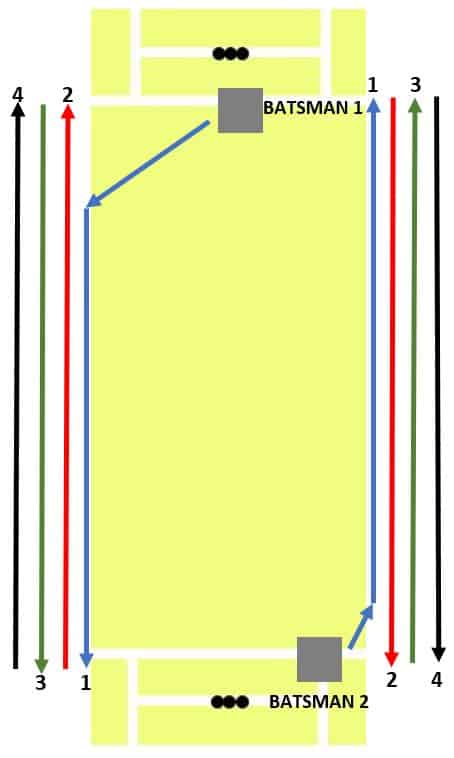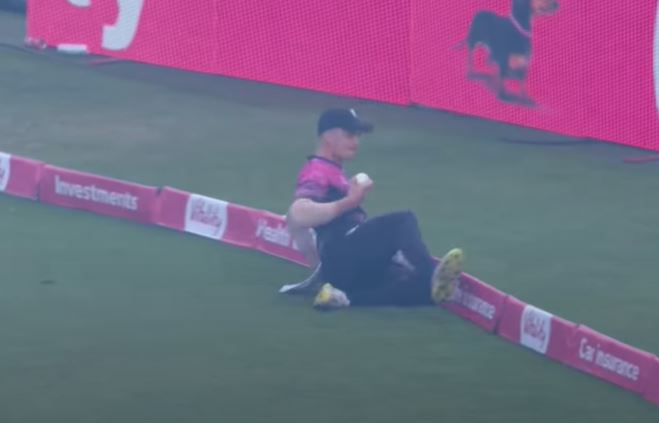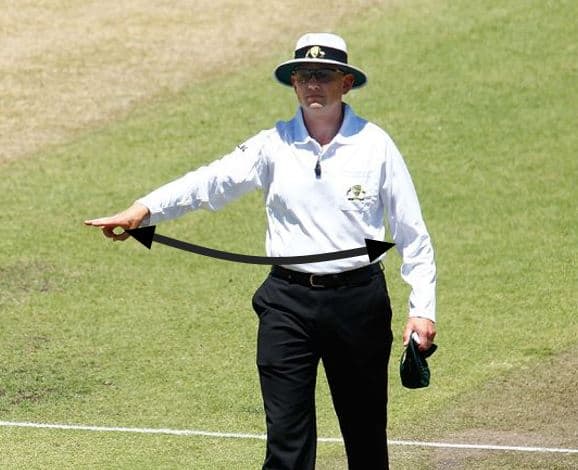To understand the game of cricket, you’re going to have to understand how runs are scored. You may have heard commentators and fans of the game talking about ‘hitting the ball for four’, but you’re probably not sure what this means, or how it is judged by the umpires. If you’re in this position, then this post will clear up any confusion that you have. I’ll give you the full definition explained in simple terms, and I’ll also answer a variety of other questions which may help you to understand the game a little bit better. Let’s begin…
So, what is a four in cricket?
The term ‘four’ in cricket refers to four runs being scored by the batting team. Fours are most often scored when a batsman hits the ball into or over the boundary rope. However, for four runs to be given the ball must bounce or roll along the ground before it hits or goes over the rope.
Although most fours involve the ball being hit into or over the boundary rope by the batsman as I explained above, this isn’t the only way a four can be scored. There are a few less common ways of hitting fours too! Here are the other main ways that you’ll see:
- The two batsmen at the crease complete an ‘all-run’ four
- A fielder throws the ball at the stumps and gives away four due to an overthrow
- A fielder makes contact with the boundary rope whilst fielding the ball
If you need a bit more information about the methods listed above, I’ll cover them in greater detail in the sections below.
The Two Batsmen At The Crease Complete An All-Run Four
If a batsman hits the ball into the outfield but the ball fails to reach the boundary rope, then the batsmen should be running between the wickets quickly and trying to pick up as many runs as possible. On larger cricket grounds, there is a small chance that they may have the opportunity to run four runs by the time the fielders have retrieved the ball and thrown it back in towards the wicket keeper.
For those of you who aren’t aware, to complete an all-run four the two batsmen at the crease must run to the opposite end of the pitch four times, grounding a part of their body or bat behind the popping crease each time they reach either end of the pitch. If you’re not sure what the popping crease is, click here to read my post explaining that. The diagram below should make all this slightly easier to understand. It shows where each batsman has to run to complete an all-run four. As you can see, by the end of the fourth run the batsmen will be back at their original ends of the pitch.

All-run fours don’t happen very often, because usually fielders will be able to retrieve the ball before the batsmen have had an opportunity to run four. However, if there is a fielding mistake on a large ground it makes it a lot more likely.
A Fielder Throws The Ball At The Stumps And Gives Away Four Due To An Overthrow
Sometimes in cricket, a fielder will try so hard to run a batsman out that they give away four runs as a result.
Imagine the following scenario – a batsman hits the ball slightly to the left of the fielder that is standing at cover. As the ball is travelling towards the fielder, the batsmen set off for a run. However, once they see how close the ball is to the fielder, they turn back sharply and return to the crease. The cover fielder, still thinking there is a chance of a run out, throws the ball hard towards the stumps and misses them by a distance. The ball then travels past the stumps and goes all the way to the boundary on the other side of the field. In this instance, four runs are awarded to the batsman who played the original shot, even though the runs were entirely the fault of the fielder who attempted to throw the ball at the stumps.
A Fielder Makes Contact With The Boundary Rope Whilst Fielding The Ball
If the ball is rolling towards the boundary and the fielder touches the boundary rope whilst trying to retrieve the ball, the ball will be adjudged to have hit the boundary and as a result four runs will be given by the umpire. This happens very frequently in international cricket matches where fielders dive in order to try to stop the ball and save a few runs.
These types of fours often have to be determined by the third umpire who will review the video footage in order to see whether the fielder managed to save any runs or not.

How Is A Four Signalled By The Umpire?
When a four is hit by the batsman, the umpire will wave one arm side to side a couple of times in a sweeping motion to indicate to the scorers and the spectators that four runs have been scored. This usually looks something like the picture below.

Do ‘Fours’ And ‘Boundaries’ Mean The Same Thing?
Fours are often referred to by commentators as ‘boundaries’, so the two words are pretty interchangeable. If you hear a commentator say that a batsman has hit a lot of boundaries, they may basically be saying that the batsman has hit a lot of fours. However, sixes are also often referred to as boundaries too, so if a commentator does mention a player hitting plenty of boundaries, you’ll need to take a more detailed look at the scorecard to if they’ve hit more fours or sixes.
Conclusion
Now that you’ve read this post I hope you’ll be a little more prepared to understand the game of cricket! Now you know what a four is, why don’t you learn a bit about how you can hit them through the covers on a more regular basis? Click here if you’d like to get some of my tips for doing that.
